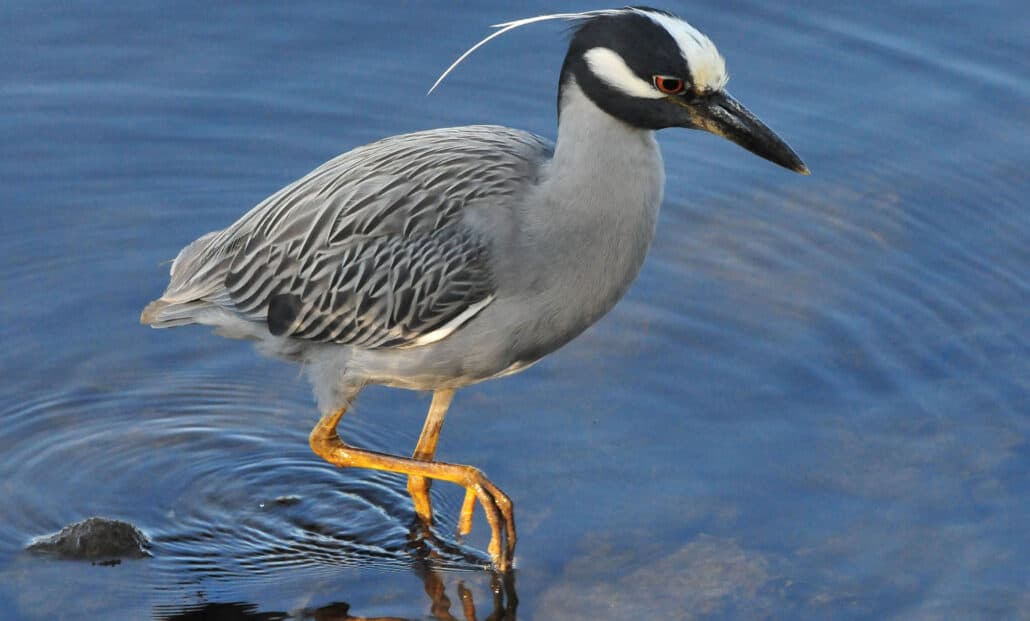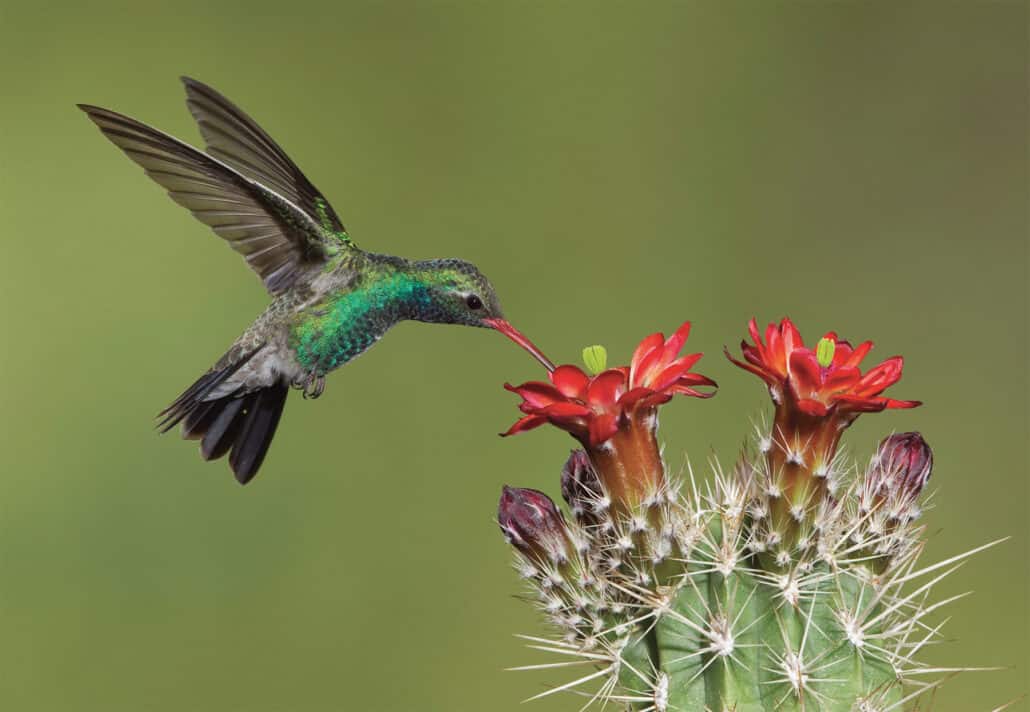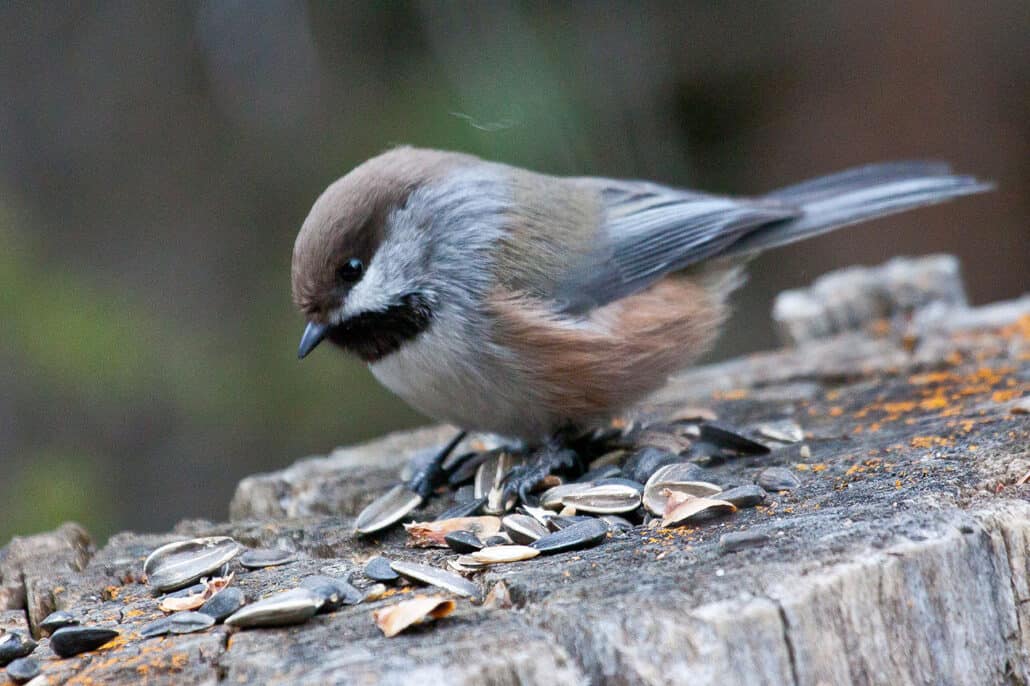Spring Birds of Louisiana (March, April, May)
The breeding season for year-round residents such as woodpeckers, brown-headed nuthatches, Carolina chickadees, tufted titmice, Carolina wrens, brown thrashers, and northern cardinals begins quite early down at this latitude. Territorial singing is initiated during the middle of February, and young are generally fledged by April, just in time to make room for the neotropical nesting species which are just then returning from Central and South American wintering grounds. A substantial number of year-round wading birds such as great egret, snowy egret, and black-crowned night-heron move into the swamps at this time to begin courtship and nest-building by February.
Neotropical songbird migration begins as early as the last week of January with the arrival of the hardiest purple martin “scouts” into Louisiana’s coastal zone. By early March, northern parula, yellow-throated warbler, and ruby-throated hummingbirds are arriving in earnest. By the third or fourth week of April, the spring migration spigot is fully opened, with tens of thousands of vireos, thrushes, warblers, tanagers, orioles, and others crossing Louisiana’s coastal zone on a daily basis.
If the weather is fair and the wind is from the south, the vast majority of these birds remain aloft until they reach mid-state, when totally depleted fat reserves force them down in widely-dispersed fashion. But, if stormy weather should intervene, this colorful parade is immediately halted, with large numbers of birds literally dropping out of the sky and onto the nearest trees. At such times, nearly every forest (urban included) within the southern third of Louisiana is alive with birds. Often, this “fall-out” effect is most vividly witnessed along the coastal woodlands, from Venice and Grand Isle on the southeastern coast, all the way west to Grand Chenier, Oak Grove, Cameron, and Johnson’s Bayou along the southwestern coast.
At about the same time as peak spring bird migration, the wading bird rookeries are greatly augmented by additional migratory species of herons, egrets, and allies such as anhinga, little blue heron, tricolored heron, yellow-crowned night-heron, green heron, and roseate spoonbill. Depending on local conditions, selected wading bird rookeries can hold more than 10,000 breeding pairs. Many smaller rookeries are also scattered in various swampy habitats throughout the state. The sights and sounds associated with wading bird rookeries are unforgettable, from the breaking of twigs for nesting material (which can sound almost like a forest fire in the larger rookeries), to the jousting of adults for prime breeding space. Add the constant chattering of nestlings, and it all combines to produce an amazing show.
Another spectacular show within the realm of Louisiana wading birds involves the late spring and summer presence of wood storks in the south-central portion of the state. Wood storks begin arriving in this area in May, and arrivals continue through much of June. The Louisiana wood storks are comprised of non-breeding or post-breeding birds from both Mexico and the southern Atlantic coast of the U.S.
During their stay in Louisiana, wood storks utilize moist-soil agricultural areas (rice and crawfish farms), swamp, and marsh habitats for foraging, and isolated swamp and riparian forests for roosting. Best places to look for them include the rice/crawfish production areas of Lafayette, Acadia, Vermilion, and Evangeline parishes, as well as the swamp areas associated with the Atchafalaya Basin in St. Martin, St. Landry, Pointe Coupee, and Avoyelles parishes. Birds are generally present in these areas each year May-September.
In a backyard settings spring is the time to accommodate year-round residents such as mourning dove, Inca dove, red-bellied woodpecker, red-headed woodpecker, downy woodpecker, hairy woodpecker, Carolina wren, Carolina chickadee, tufted titmouse, brown thrasher, northern mockingbird, northern cardinal and others during their annual breeding and nesting efforts. These birds begin courtship around March and are nesting by early April.
The doves require a good supply of white and red millet seed. The woodpeckers and wrens appreciate suet-block products. Chickadees, titmice, and cardinals all favor black-oil sunflower seed. Keep in mind that downy woodpecker, Carolina wren, and Carolina chickadee all require small-cavity nest sites such as dead branch hollows and tiny-hole (1 to 1 1/2-inch) nest boxes. When possible and practical, leave dead branches intact on trees and place small-hole next boxes in unobtrusive spots around your property.
Common spring migrant birds that should be expected in backyard settings include species such as ruby-throated hummingbird, rose-breasted grosbeak, indigo bunting, painted bunting, Baltimore oriole, and orchard oriole. The grosbeak, buntings, and orioles all visit seed feeders stocked with millet and black-oil sunflower seed. Red mulberry and Japanese plum trees provide fruits for the grosbeak and orioles, along with many other migrants, including vireos, thrushes, tanagers. The blooms of native red buckeye ,tulip poplar, and coral honeysuckle attract hummingbirds and orioles without fail.




